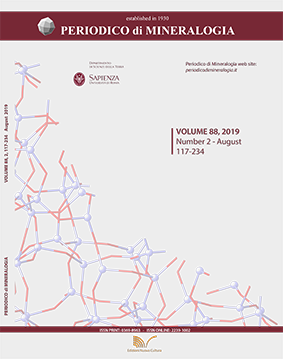An investigation on the zoning associated with divalent elements, P, Cr, Al and Ti in olivines from the Kilauea Iki lava lake (Hawaii)
DOI:
https://doi.org/10.2451/2019PM845Abstract
The residual chemical zoning in olivine crystals can be used to reconstruct and decipher the history of a magma body. Olivine-bearing samples recovered from the drill KI81-1 of the Kilauea Iki lava lake have been investigated to interpret their zoning in divalent and trace elements. Divalent elements (Ni, Mn, and Ca) tend to be correlated to Fo contents, although no residual concentric chemical zoning is preserved for Ni, in response to the cooling of the magma body. Trace elements such as P, Ti, Al, and Cr are prone to develop skeletal enrichments as consequence of episodes of rapid crystal growth caused by the cooling of the lava lake itself. These observed features, coupled also with the absence of reverse zoning and of resorption features in olivine crystals, suggest that the Kilauea Iki lava lake could be viewed as approaching closely an ideal closed system.Downloads
Published
2019-08-01
Issue
Section
PETROLOGY


